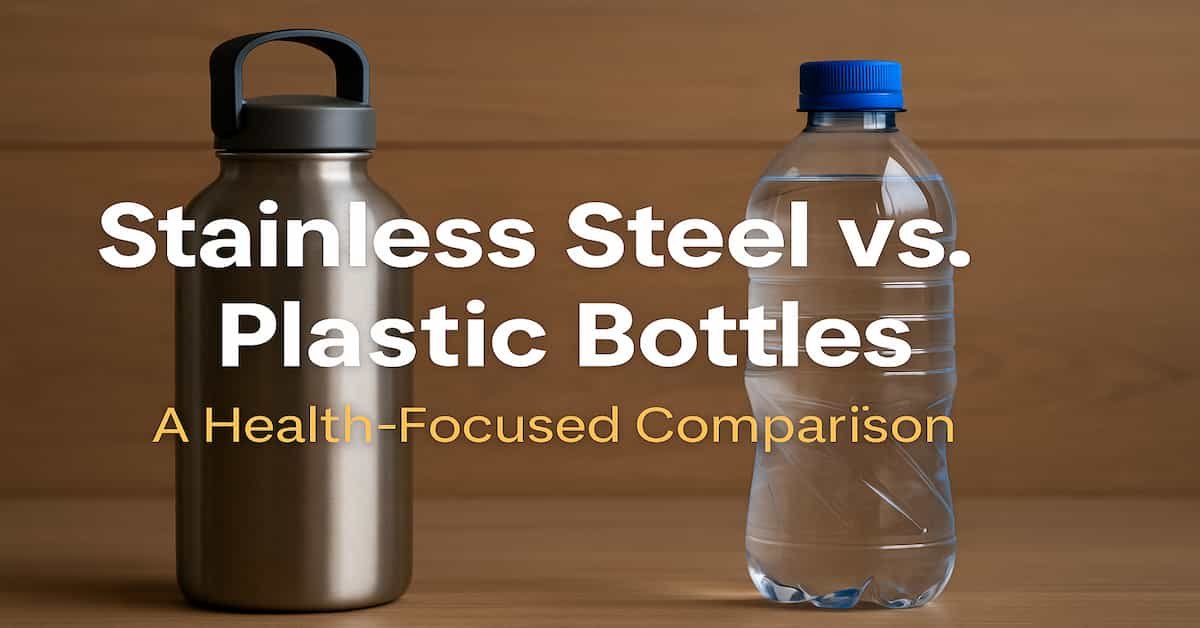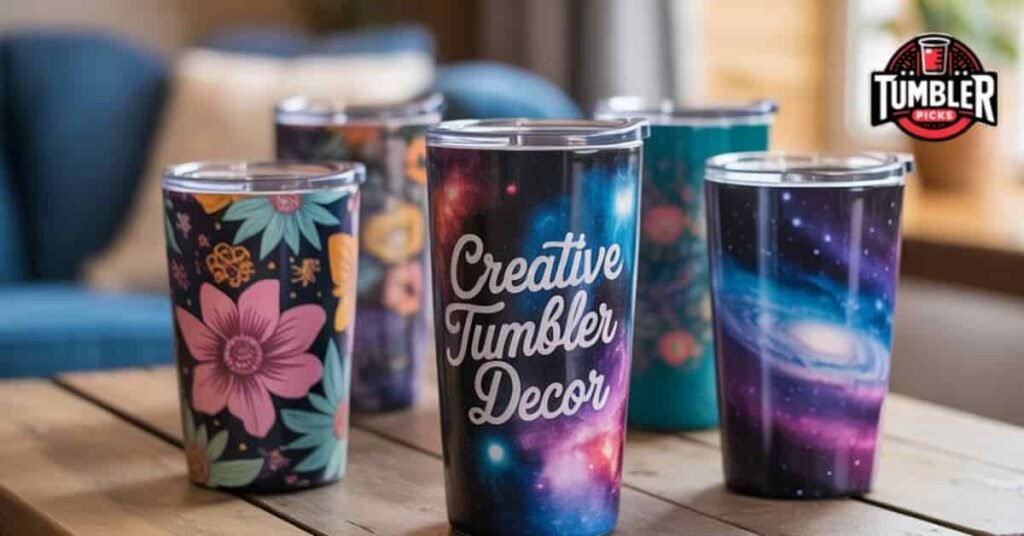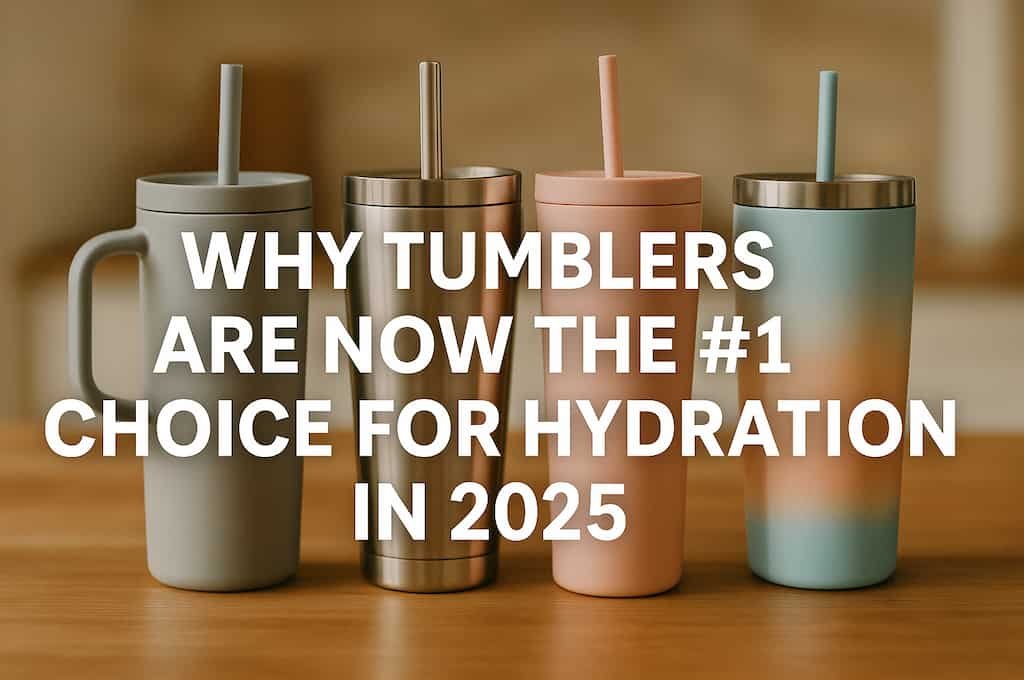In my years of testing gear and writing about eco-friendly living, I’ve come to see how crucial it is to make an informed choice when it comes to everyday bottles. While plastic ones remain a popular and common pick due to convenience, they carry a high cost—not just to your health, but to the environment. The impact of single-use plastics is now at the foreground of societal concerns, with studies showing how these throwaway cups have become major sources of pollution.
That’s why so many people are adopting more sustainable practices and switching to reusable, durable options like stainless steel. These are not only more superior in terms of durability, but also offer long-term benefits and align with global eco-friendliness goals. As someone who values both style and purpose, I always look for environmental value in the gear I use—and this simple decision to replace harmful plastics can have a significant effect.
This guide offers a broader look at the effects, helping you compare the options clearly and understand what best fits your needs. In today’s world of rising consciousness, choosing sustainability is not just a preference, it’s a critical way of living in harmony with our shared world.

Table of Contents
Stainless Steel vs Plastic Bottles
Let’s explore how stainless steel and plastic bottles stack up—especially when it comes to your health.
🧠 Introduction: Why Bottle Material Matters
Your water bottle is more than just a container. It touches your drink, goes wherever you go, and can even impact your health depending on what it’s made of. The main keyword here—stainless steel vs plastic bottles health comparison—helps us understand the potential effects of each material on your well-being.
Let’s break it down based on what really matters: chemical safety, reusability, hygiene, and long-term exposure.
🚫 Health Risks of Plastic Bottles
Plastic bottles, especially disposable ones, have been under scrutiny for years. Here’s why:
🔍 BPA & Chemical Leaching
- Many plastic bottles contain Bisphenol A (BPA), a chemical linked to hormone disruption.
- Even BPA-free plastics may leach BPS and other chemicals.
- When exposed to heat or UV light (like in your car), plastic degrades and releases toxins.
🦠 Bacteria Buildup
- Plastic bottles often develop micro-cracks inside where bacteria hide.
- They’re hard to clean thoroughly due to narrow mouths and soft surfaces.
♻️ Short Lifespan
- Most plastic bottles are not meant for long-term use.
- Frequent use wears them down, increasing the risk of contamination.
✅ Health Benefits of Stainless Steel Bottles
Stainless steel isn’t just sleek—it’s safe.
🧪 Non-Toxic & Chemical-Free
- Made from food-grade stainless steel (usually 304 or 18/8).
- No BPA, phthalates, or harmful coatings.
🧼 Easy to Clean
- Most stainless steel bottles are dishwasher-safe.
- Resistant to odors, stains, and bacteria buildup.
🔥 Temperature Control
- Double-walled vacuum insulation keeps drinks hot or cold for hours.
- Less likely to require additives or frequent topping off (reduces contamination).
⚖️ Pros and Cons Table
| Feature | Stainless Steel Bottles | Plastic Bottles |
|---|---|---|
| Health Safety | ✅ Excellent (non-toxic) | ❌ Risk of chemical leaching |
| Temperature Control | ✅ Insulated, long-lasting | ❌ Poor heat/cold retention |
| Durability | ✅ Long-lasting & strong | ❌ Prone to cracks |
| Bacteria Resistance | ✅ Easy to sanitize | ❌ Hard to fully clean |
| Weight | ❌ Heavier | ✅ Lightweight |
| Price | ❌ Higher upfront cost | ✅ Budget-friendly |
⭐ 5-Star Rating Table
| Category | Stainless Steel | Plastic |
| Health & Safety | ⭐⭐⭐⭐⭐ | ⭐⭐ |
| Cleaning Ease | ⭐⭐⭐⭐ | ⭐⭐ |
| Durability | ⭐⭐⭐⭐⭐ | ⭐⭐ |
| Eco-Friendliness | ⭐⭐⭐⭐ | ⭐ |
| Temperature Control | ⭐⭐⭐⭐ | ⭐ |
🌱 Environmental Impact
Let’s not forget about the planet.
🌍 Stainless Steel Bottles:
- 100% recyclable and reusable for years.
- Reduces the need for disposable containers.
🧃 Plastic Bottles:
- Only 9% of plastic gets recycled globally.
- Take hundreds of years to break down.
- Contribute to microplastics in oceans.
External Source: National Geographic – Plastic Pollution
🤔 Which Bottle Is Right for You?
Ask yourself:
- Do you care about chemical exposure? → Choose stainless steel.
- Are you looking for something lightweight for casual use? → Plastic may suffice short-term.
- Want to protect your family’s health long-term? → Stainless steel wins again.
If you’re serious about health, hygiene, and hydration, stainless steel is the clear choice.
📢 Final Verdict & CTA
When it comes to a health-focused decision, stainless steel water bottles are far superior to plastic ones. They’re safer, cleaner, longer-lasting, and eco-friendly.
Ready to make the switch? Check out our guide to the Best Stainless Steel Water Bottles for Everyday Use 🛍️
👉 Explore our top picks and find your perfect bottle today!
🙋♀️ FAQs
Which is better plastic or stainless steel water bottles?
As someone who regularly uses both, I find stainless steel water bottles are more durable, reusable, and chemical-free, unlike plastic water bottles that may leach harmful chemicals like BPA, especially under heat exposure. Though plastic is affordable, lightweight, and comes in fun designs for kids, it’s often discarded, contributing to pollution and landfills. Stainless options, especially food grade #304 or 18/8, are corrosion resistant, offer better temperature control, and ensure clean flavors with no odors. For long-term daily hydration, eco-friendly living, and health benefits, I always reach for stainless steel.
What are the disadvantages of a stainless steel water bottle?
Using stainless steel water bottles has some downsides—though they’re safe, reusable, and BPA-free, they can feel heavier than plastic and may develop a metallic taste, especially in hot weather or if left in a car. I’ve had one dent after being dropped, and the paint started to peel from the exterior. If not made from food grade 304 stainless steel or grade 316, the resin lining may leach harmful chemicals. Proper cleaning with white vinegar, bicarbonate, and a long handle brush is needed to avoid mould, lime deposits, and other residues.
🔗 Related Reads:
- Camping Gear Essentials Checklist 2025: Your Guide to a Smooth Outdoor Escape
👉 Read the full guide - Top Hydration Tumblers for Travel: Stay Refreshed On the Go
👉 See which ones made the list - Best Insulated Water Bottles for Summer 2025 – Stay Cold All Day!
👉 Learn more here - How to Choose the Best Water Bottle for Travel
👉 Learn more here


